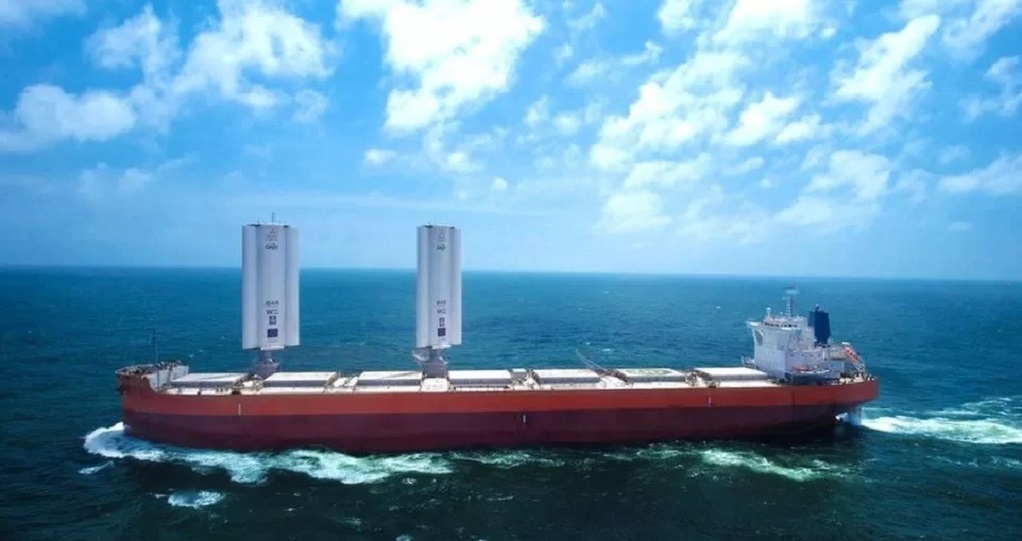A cargo ship fitted with giant, rigid British-designed sails has set out on its maiden voyage.
Shipping firm Cargill, which has chartered the vessel, hopes the technology will help the industry chart a course towards a greener future.
The WindWings sails are designed to cut fuel consumption and therefore shipping’s carbon footprint.
It is estimated the industry is responsible for about 2.1% of global carbon dioxide (CO2) emissions.
The Pyxis Ocean’s maiden journey, from China to Brazil, will provide the first real-world test of the WindWings – and an opportunity to assess whether a return to the traditional way of propelling ships could be the way forward for moving cargo at sea.
Folded down when the ship is in port, the wings are opened out when it is in open water. They stand 123ft (37.5m) tall and are built of the same material as wind turbines, to make them durable.
Enabling a vessel to be blown along by the wind, rather than rely solely on its engine, could hopefully eventually reduce a cargo ship’s lifetime emissions by 30%.
Jan Dieleman, president of Cargill Ocean Transportation, said the industry was on a “journey to decarbonise”. He admitted there was “no silver bullet” – but said this technology demonstrated how fast things were changing.
The Pyxis Ocean will take an estimated six weeks to reach its destination – but the technology it is using has its origins in something much faster.
It was developed by UK firm BAR Technologies, which was spun out of Sir Ben Ainslie’s 2017 America’s Cup team, a competition sometimes called the ‘Formula One of the seas’.
Experts say wind power is a promising area to explore, as the shipping industry tries to reduce the estimated 837 million tonnes of CO2 it produces each year.
In July it agreed to reduce planet-warming gases to net-zero “by or around 2050” – a pledge critics said was toothless.
Even if that number dramatically increases, wind technology may not be suitable for all vessels, for example, where the sails interfere with the unloading of containers.
Tags: Cargill, CO2 Emisssions, Shipping Firm



Recent Posts
Port of Brisbane Unveils Vision 2060 to Drive Smarter, Cleaner, and More Connected Future
Wärtsilä to Deliver Hybrid Propulsion Systems for Vertom Group’s New Low-Emission Vessels
Latvian port receives electric Konecranes Gottwald Mobile Harbor Crane
Sustainable Ocean Economy Vital for Human Development, Says UNDP at UN Ocean Conference
Green Hydrogen Costs in India Could Drop by 40%, Says IEEFA-JMK Report
Cavotec Secures €1.55 Million Shore Power Contract for Port of Antwerp-Bruges
APM Terminals and SANY Marine sign landmark agreement to accelerate decarbonisation
The Port of Gothenburg takes big step towards shore power connection for container and car/RoRo vessels